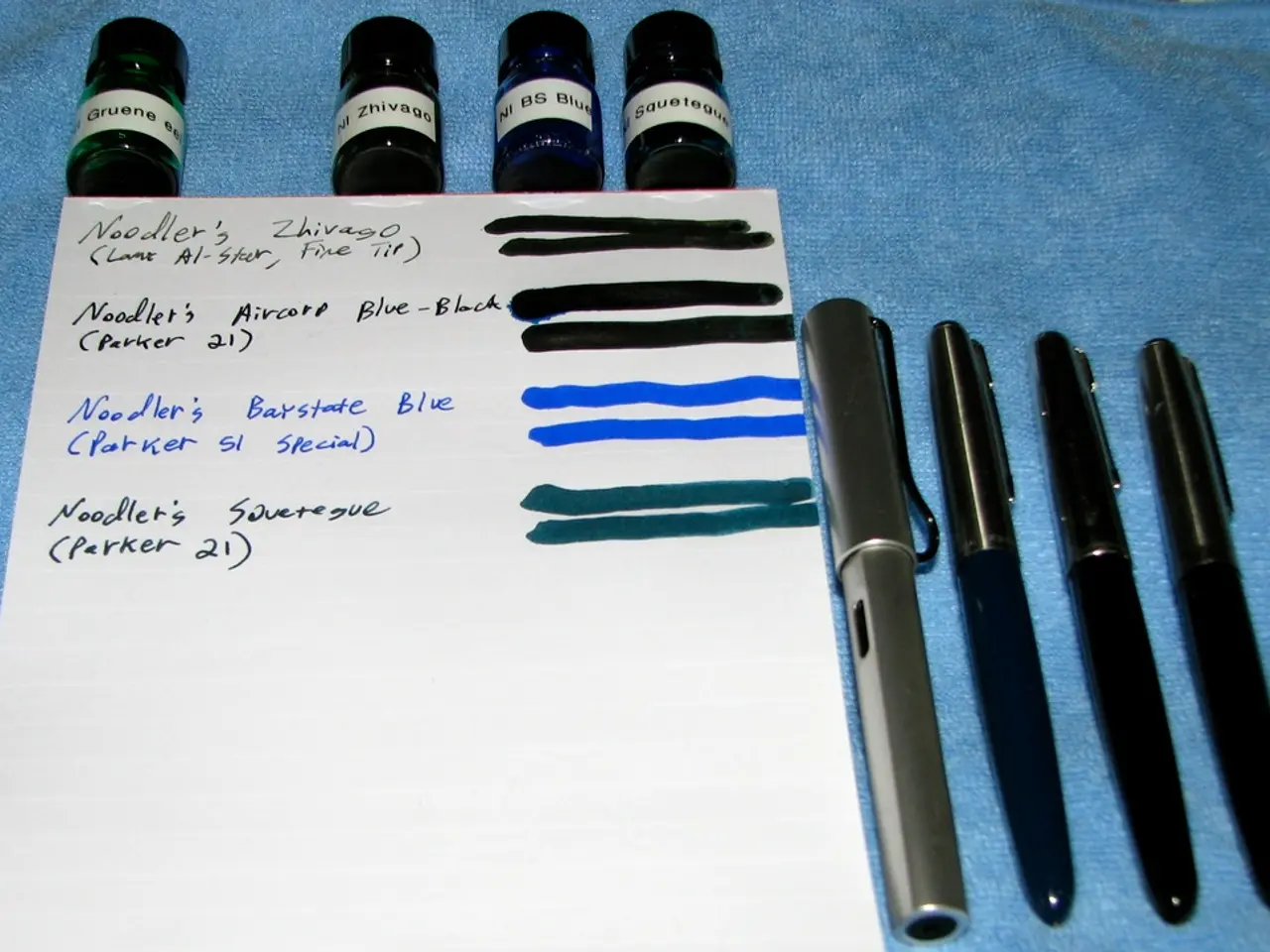Investigating Ink Toxicity: Appearance of Ink Poisoning Symptoms
Ink poisoning, while relatively uncommon, can pose a health risk, especially in children and adults who are exposed to large amounts of ink or contaminated inks. This article aims to provide an overview of the common causes, symptoms, treatment options, and prevention strategies for ink poisoning.
Common Causes
Ink poisoning typically occurs due to ingestion, skin contact, eye exposure, or tattoo inks. Ingestion can happen accidentally or intentionally, while skin contact and eye exposure can occur during work or play. Tattoo inks, particularly when contaminated or improperly handled, can lead to more serious reactions.
Symptoms
| Exposure Type | Common Symptoms | |-------------------|--------------------------------------------| | Ingestion | Nausea, vomiting, stomach upset; requires large quantities to be dangerous. Small amounts generally harmless. | | Skin contact | Temporary staining, possible redness, itching, mild irritation. Harsh ink removers may cause more skin irritation than ink itself. | | Eye contact | Redness, stinging, burning sensation, pain, swollen eyelids, temporary blurred vision. | | Tattoo-related| Allergic reactions (redness, swelling), infections (pus, blisters, fever), eczema or psoriasis flares, and keloid scars. |
Treatment Options
For ingestion, supportive care, hydration, and monitoring are usually sufficient. However, medical attention is necessary if symptoms like severe nausea and vomiting occur. Skin exposure can be treated by washing with soap and water, while avoiding harsh chemicals for stain removal to prevent further irritation. Eye exposure requires rinsing with lukewarm water for about 15 minutes, followed by medical care if symptoms persist. Tattoo infections or allergic reactions may require antibiotics, topical steroids, corticosteroid injections, laser therapy, or surgery.
Prevention Strategies
Prevention centres on avoiding ingestion and unprotected exposure. This includes avoiding swallowing ink deliberately, keeping pens and markers out of children’s reach, using protective equipment in occupational settings, and careful handling to avoid eye contact. For tattoos, it's essential to ensure they are done with sterile equipment and regulated inks, and to follow aftercare instructions carefully.
In children, symptoms can include irritability, behavioral changes, or fever. To prevent ink poisoning, store ink products in clear containers for easy identification, designate specific, high, and locked storage areas in your home, and regularly review storage areas. When choosing new ink products, look for non-toxic options, especially for young users. Educating about ink products, safe storage practices, and using non-toxic products is crucial.
In summary, ink poisoning is usually mild, with nausea and irritation as the main symptoms. Serious complications arise mainly with large ingestion or infected tattoo inks. By understanding the risks and implementing prevention strategies, you can ensure a safer environment for everyone.
[1] Mayo Clinic. (2021). Ink poisoning. https://www.mayoclinic.org/drugs-supplements/ink/poisoning/basics/what-to-do/hrb-20065556 [2] National Capital Poison Center. (2021). Ink. https://www.poison.org/articles/ink [3] American Academy of Pediatrics. (2021). Preventing Injuries: Art and Craft Safety. https://www.healthychildren.org/English/safety-prevention/at-home/Pages/Art-and-Craft-Safety.aspx
- While amusing doodles are a common part of science and health-and-wellness sketches, it's crucial to remember the potential risks of ink poisoning.
- In the realm of personal growth and career development, learning about different therapies-and-treatments, including the safety of various inks, proves valuable.
- Skin conditions like eczema or psoriasis can be exacerbated by certain ink-related skin irritations, emphasizing the importance of education-and-self-development in understanding potential triggers.
- In the context of mental health, chronic diseases, and medical-conditions, it's vital to ensure that skin-care practices do not involve toxic inks causing adverse reactions.
- CBD based therapies and treatments might offer relief for certain neurological-disorders; however, mindful consumers should research the safety of the inks used in manufacturing such products.
- The preventive measures for ink poisoning, such as careful handling of inks and proper storage, can be applied to learning and skills-training materials in education-and-self-development.
- Proper research and understanding of product ingredients, including those in inks, are essential components of personal-growth and career-development in the field of science.
- As we strive towards health-and-wellness, being aware of the dangers of ink poisoning and implementing prevention strategies serves as a reminder of our collective responsibility to prioritize our well-being and the well-being of future generations.




